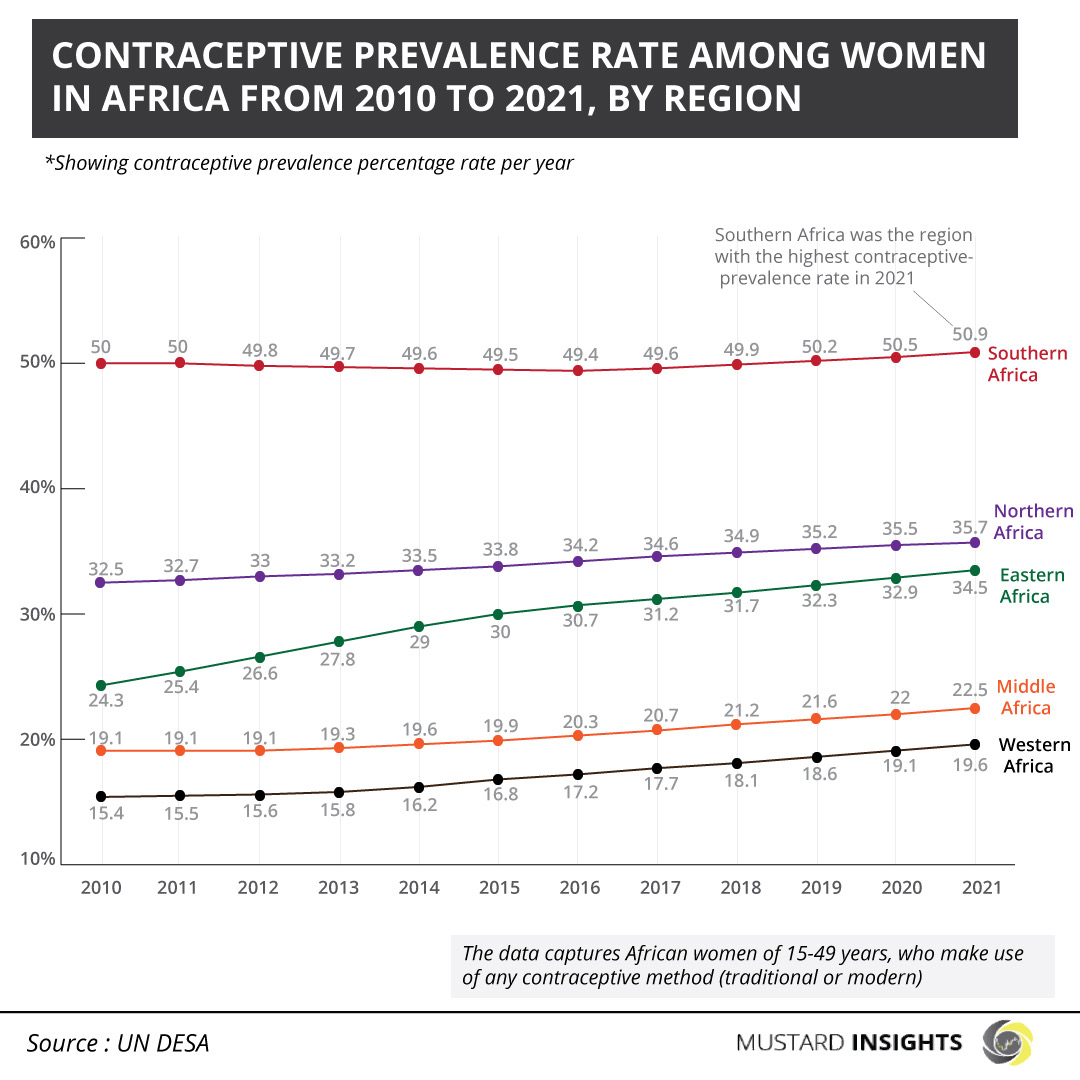In Africa, contraceptive prevalence (any method) is estimated at 29.4% compared to 48.5% of global contraceptive prevalence. A growing population, limited access to contraception, cultural and religious opposition, all contribute to the high "unmet need" for contraception in Africa.

The prevalence of specific contraceptive methods varies widely across the world. According to the United Nation, 49 per cent of women in the reproductive age range (15-49 years) (a total of 922 million women) were using some form of contraception, an increase from 42 per cent (a total of 554 million women) in 1990.
Method mix continue to shift over time due to changes in related policies, changes in health-care system, development of new technologies, and changes in access to the various methods.
In Africa, contraceptive prevalence (any method) is estimated at 29.4% compared to 48.5% of global contraceptive prevalence. A growing population, limited access to contraception, limited available choices for type of contraception, cultural and religious opposition, poor quality of available services, and gender-based barriers, all contribute to the high "unmet need" for contraception in Africa.
The Southern region has the highest contraceptive prevalence rate than any other region (Southern, Northern, Eastern, Middle and Western Africa) in Africa. Over 50% of women aged 15 - 49 years in Southern Africa use either traditional or modern methods of contraceptives in 2021 with other regions lagging.
Western Africa has the fewest contraceptive prevalence rate in Africa with less than 20% of same age bracket women adopting any use of contraceptives.
Breakdown & Key Metrics
Contraceptive is a device used to prevent fertilisation of an egg, e.g. a condom worn by a man during intercourse, or a pill taken regularly by a woman.
Data from the United Nations Department of Economic and Social Affairs and Population Division (UN DESA) show that out of all the five regions of Africa, Southern Africa is the only region that has consistently had high contraceptive prevalence between 2010 and 2021. During this period, it has hovered around the 50% mark with highest contraceptive prevalence percentages of 49.4% (2016) and 50.9% (in 2021) respectively.
Contraceptive prevalence trend in Eastern Africa is similar to Northern Africa. Year-on-year contraceptive prevalence in the region grew steadily from its lowest rate of 24.3% in 2010 to a peak of 34.5% in 2021. Contraceptive prevalence rates among Eastern African women was 25.4% in 2011 and rose to 26.6% in 2012, 27.8% in 2013. The adoption of contraceptive use saw contraceptive prevalence rates increase to 31.7% in 2018, 32.3% in 2019, 32.9% in 2020 and 34.5% in 2021.
Western Africa has the lowest contraceptive prevalence from 2010 to 2021, with its lowest rate being 15.4% in 2010 and highest rate of 19.6% in 2021.
Takeaway
Although contraceptive usage in Africa has significantly improved since 2010, Africa still has the highest fertility rate in the world. According to the Agence Francaise de Development (AFD) in its report “AFD’s Atlas of Africa”, as at 2017, Africa had a fertility rate of 4.5 children per woman. As at 2019, the UN report shows infertility rate at 4.4%.
The most notable drop in fertility rate has been in Northern Africa, where the rate reduced by half from 6 to 3 children, and showed by its nearly 51% adoption of contraceptive usage in the region. Other regions in Africa are experiencing a demographic transition.
Thoughts?
We won't share your email address. All fields are required.
